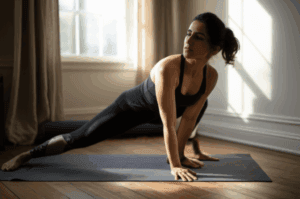The global fight against dementia is intensifying as the number of individuals affected by cognitive decline continues to rise. Recent studies highlight a powerful weapon in this fight: exercise. While there’s no guaranteed cure, incorporating a consistent, well-rounded workout routine into your life could significantly reduce your risk. Experts suggest that even small amounts of physical activity can make a difference, with just 5 minutes a day showing potential benefits. This article outlines a 60-minute workout routine designed to boost brain health and help keep dementia at bay.
The Brain-Boosting Power of Exercise
Why is exercise so crucial for cognitive health? Regular physical activity has a profound impact on the brain, improving its function in several key ways:
- Improved Blood Flow: Exercise increases blood flow to the brain, delivering essential nutrients and oxygen needed for optimal function. This is crucial because the brain needs a constant supply of energy to work efficiently.
- New Brain Cell Growth: Physical activity stimulates the growth of new brain cells, a process known as neurogenesis. This helps to maintain cognitive function and build a “cognitive reserve,” delaying the onset of dementia symptoms.
- Release of Growth Factors: Exercise triggers the release of growth factors, chemicals that support the health of brain cells and promote the growth of new blood vessels in the brain. Brain-derived neurotrophic factor (BDNF) is one such molecule that is important to memory.
- Cardiovascular Health: Exercise helps manage cardiovascular risk factors like high blood pressure and cholesterol, which are linked to an increased risk of dementia. Keeping your heart healthy directly benefits your brain.
- Mood and Stress Reduction: Exercise reduces stress and improves mood, factors that can negatively impact cognitive function.
Crafting Your 60-Minute Brain-Boosting Workout
A comprehensive workout routine for dementia prevention should incorporate a variety of exercises to target different aspects of brain and body health. Here’s a sample routine you can adapt to your own fitness level and preferences:
1. Warm-up (5 minutes)
- Purpose: Prepares your body for exercise and increases blood flow to your muscles and brain.
- Activities:
- Light cardio, such as marching in place or arm circles (2 minutes)
- Dynamic stretches, such as leg swings, torso twists, and arm stretches (3 minutes)
2. Aerobic Exercise (30 minutes)
- Purpose: Elevates your heart rate, improving cardiovascular health and blood flow to the brain.
- Activities: Choose one or a combination of the following:
- Brisk Walking or Jogging: Aim for a pace that makes you slightly breathless.
- Cycling: Indoors or outdoors, cycling is a low-impact way to get your heart pumping.
- Swimming: A full-body workout that’s gentle on the joints.
- Dancing: A fun and engaging way to increase your heart rate and improve coordination.
- Aerobics Classes: Many options exist to suit varying fitness levels.
3. Strength Training (15 minutes)
- Purpose: Builds muscle strength, improves balance, and helps control blood sugar levels, all of which contribute to brain health.
- Activities:
- Bodyweight Exercises: Squats, lunges, push-ups (modified on your knees if needed), and planks.
- Weight Lifting: Use dumbbells, resistance bands, or household items like cans or water bottles. Focus on exercises that target major muscle groups, such as biceps curls, triceps extensions, overhead presses, and rows.
- Heavy Gardening: Activities like digging and shoveling can also provide a strength-building workout.
4. Balance and Flexibility (10 minutes)
- Purpose: Improves balance, coordination, and flexibility, reducing the risk of falls and promoting overall well-being.
- Activities:
- Yoga: Combines physical movement with mindfulness, reducing stress and improving mental clarity.
- Tai Chi: A gentle form of martial arts that enhances balance and cognitive function.
- Pilates: Improves balance and stability, as well as overall strength and flexibility.
- Stretches: Hold each stretch for 20-30 seconds. Focus on major muscle groups, such as hamstrings, quadriceps, calves, chest, and shoulders.
5. Cool-down (5 minutes)
- Purpose: Allows your body to gradually recover and prevents muscle soreness.
- Activities:
- Light cardio, such as walking (2 minutes)
- Static stretches, holding each stretch for 20-30 seconds (3 minutes)
Adapting the Routine to Your Needs
This is just a sample routine; the key is to find activities you enjoy and can stick with long-term. Consider these tips for adapting the routine to your individual needs:
- Start Slowly: If you’re new to exercise, begin with shorter workouts and gradually increase the duration and intensity. Even 5-10 minutes of daily activity is better than nothing.
- Listen to Your Body: Pay attention to any pain or discomfort and modify the exercises accordingly. Don’t push yourself too hard, especially when starting.
- Consult Your Doctor: Talk to your doctor before starting any new exercise program, especially if you have any underlying health conditions.
- Make it Social: Exercise with a friend, family member, or join a group fitness class to stay motivated and have fun.
- Incorporate Daily Activities: Find ways to build activity into your everyday life, such as walking to the shops, taking the stairs instead of the elevator, or doing housework.
- Be Consistent: Aim for at least 150 minutes of moderate-intensity or 75 minutes of vigorous-intensity aerobic exercise per week, along with strength training exercises at least two days per week.
Beyond Exercise: A Holistic Approach to Brain Health
While exercise is a powerful tool for dementia prevention, it’s important to remember that it’s just one piece of the puzzle. A holistic approach to brain health includes:
- Healthy Diet: A balanced diet rich in fruits, vegetables, whole grains, and healthy fats is essential for brain health.
- Cognitive Stimulation: Engage in mentally stimulating activities, such as reading, puzzles, games, or learning new skills.
- Social Engagement: Stay connected with friends and family and participate in social activities.
- Sufficient Sleep: Aim for 7-8 hours of quality sleep per night.
- Stress Management: Practice stress-reducing techniques, such as meditation, yoga, or spending time in nature.
The Takeaway
Protecting your brain health is a lifelong journey, and exercise is a vital component. By incorporating this 60-minute workout routine, or a modified version that suits your needs, into your weekly schedule, you can take proactive steps to reduce your risk of dementia and enjoy a sharper, healthier mind for years to come. Remember, even small amounts of exercise can make a big difference, so start today and make movement a priority.







